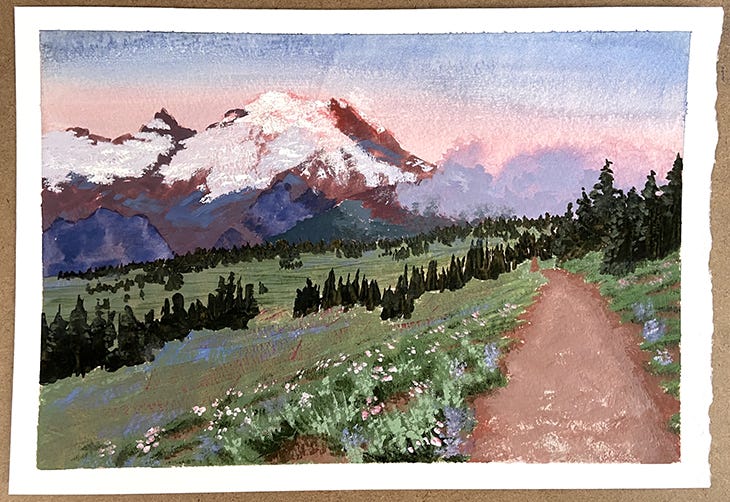I’m getting a handle on gouache!
I started trying gouache recently after working in watercolor for my landscape painting for a couple (sparse) years. The ability to paint opaquely makes the medium much more forgiving compared to watercolor, where you really need to be deliberate about the order in which you do things.
Gouache is actually just watercolor with white added to make it opaque. What’s awesome about this is that you can actually just work with watercolor and mix in white when you want to paint opaquely, giving you access to both worlds with the same set of paints. I learned this approach from Nathan Fowkes’ Landscape Sketching Course at Schoolism, which also helped me to loosen up with my painting.
But at first I struggled with the gouache: the colors I mixed were wet and glided too much when I wanted them to scumble, and with the wetness they sometimes also had undesired transparency.
Fortunately, I had a technique breakthrough while working on copying1 a portrait by John Singer Sargent, one of my favorite painters.
This may seem obvious, but to keep the paint opaque and able to scumble, when you wet or rinse a brush, dab out excess water on a paper towel before you start mixing paint.
The thing is that coming from watercolor, you might be used to working with more, well, water in your brush. It gives you luminous colors with the white of the paper shining through, and allows you to mix colors by glazing. But on the flip side, even the residual water left in the bristles after pressing out water against the side of your water cup is enough to dilute all the paint you mix, leading to the excessive wetness I was experiencing.
This may seem obvious, but to keep the paint opaque and able to scumble, when you wet or rinse a brush, dab out excess water on a paper towel before you start mixing paint. That will pull out more water after pressing out what you can from the bristles against the cup wall.
And with that realization, I was able to control the texture and color of the paint much better. Hope that’s helpful!
When we’re kids, we shame each other for copying others’ artwork. “You just copied it!” But copying others’ creations to learn from them is actually a time-honored method. There’s no shame in it—just don’t claim it as your own and give credit where it’s due.




